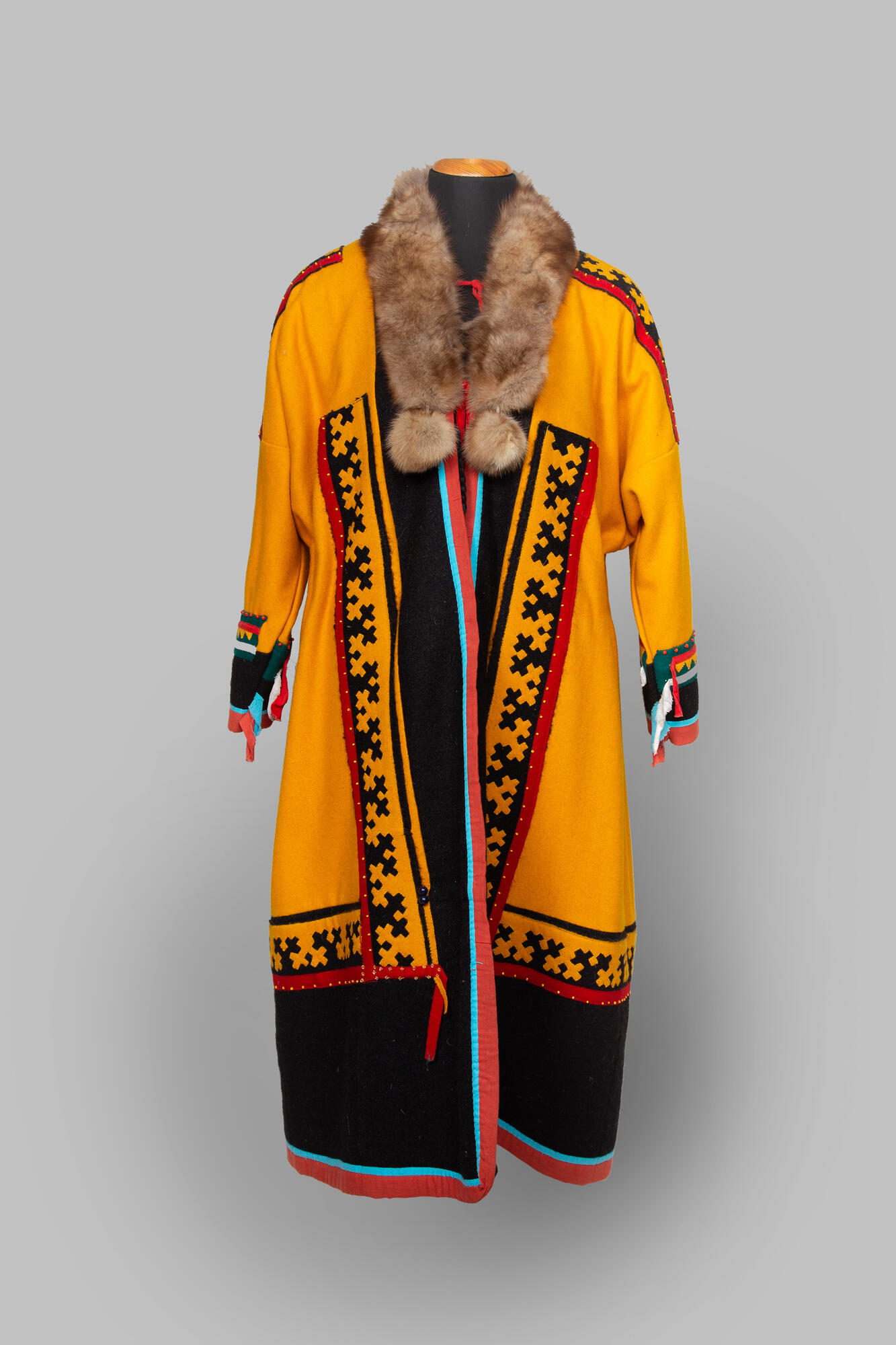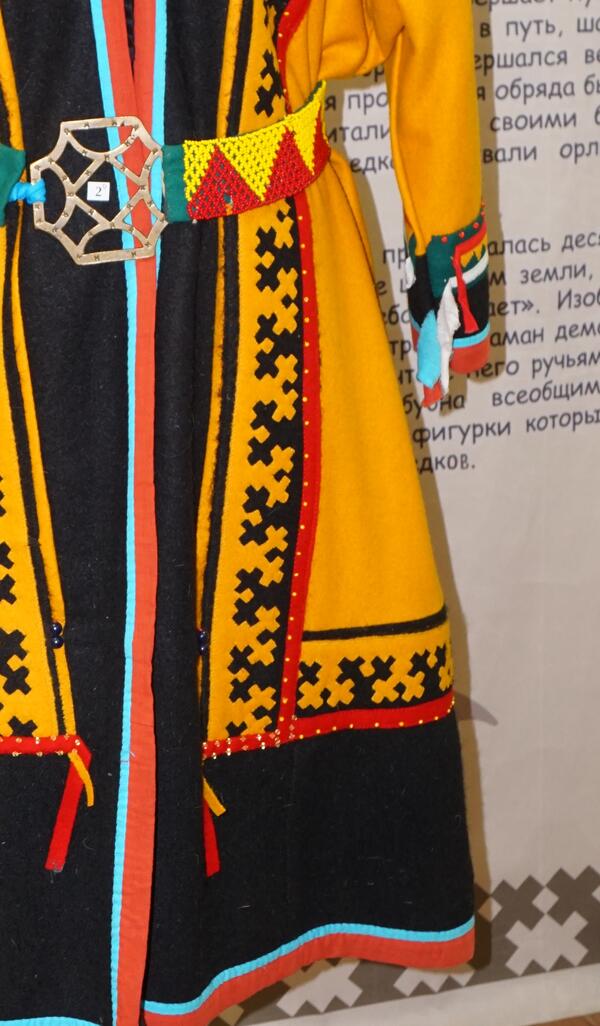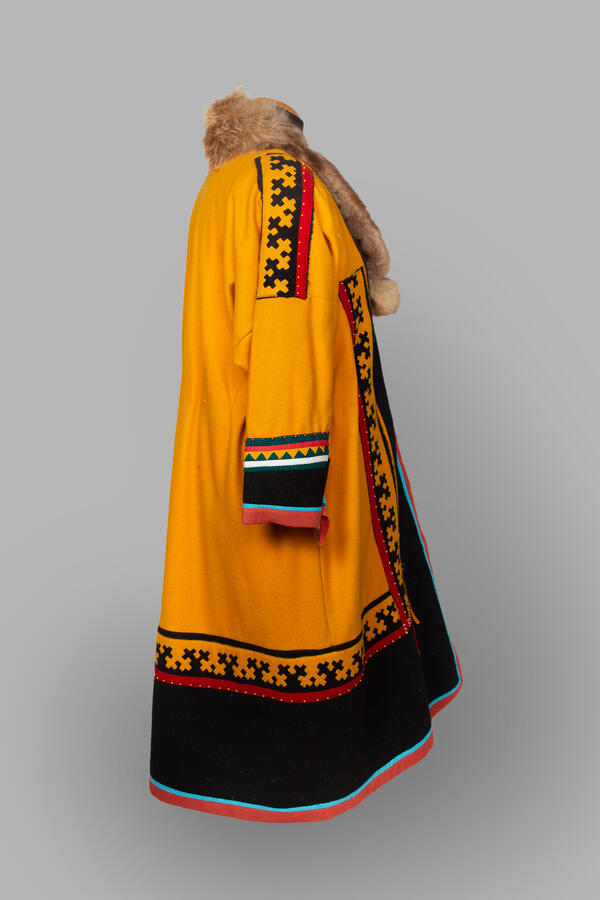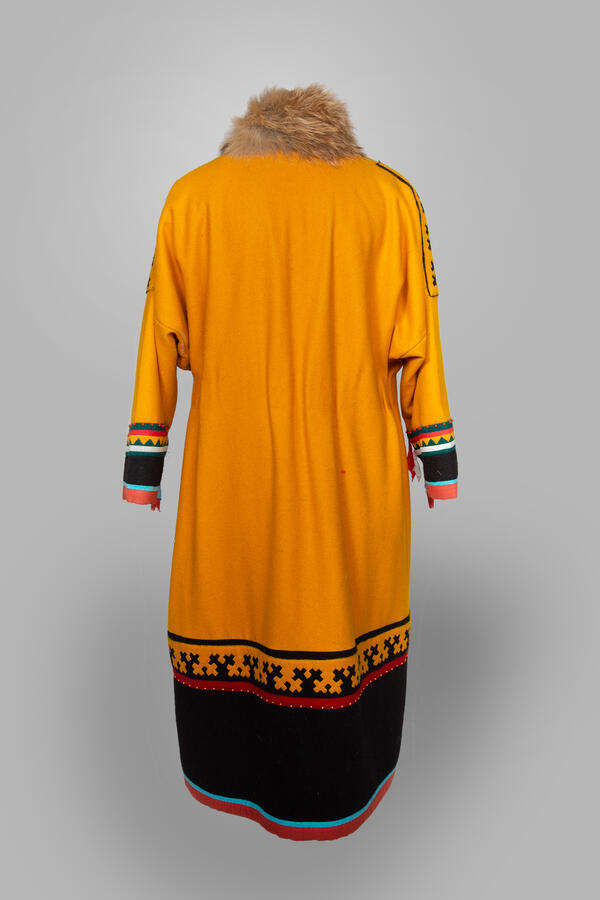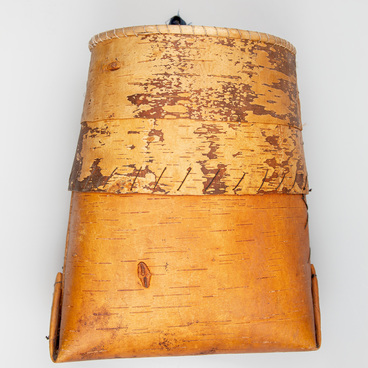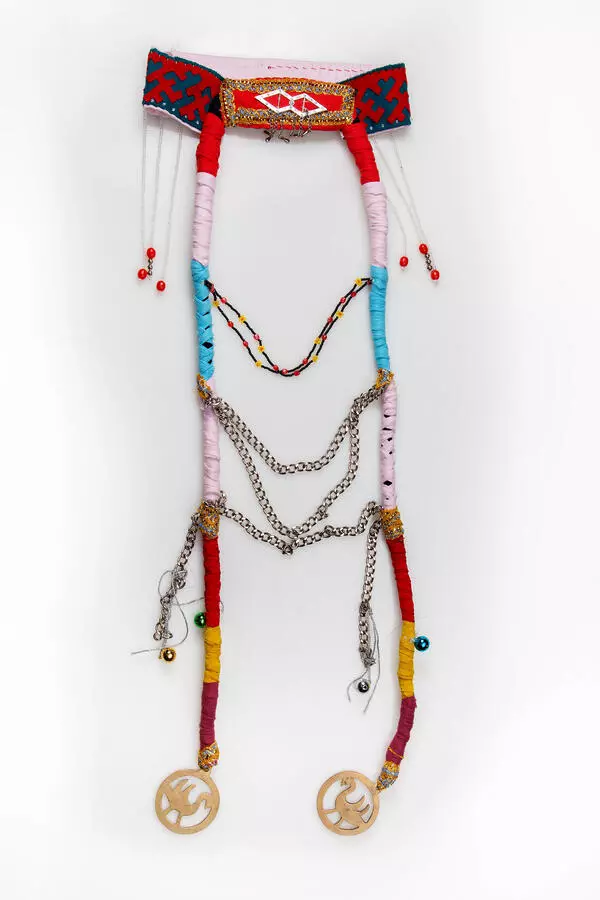The national costume for centuries has been shaped by the worldview of the people, their culture, climatic conditions and craft opportunities. The nature of clothing, its design, material and cut help identify the geography, gender, social status and occupation of the owner. The northern costume must meet two main requirements — it has to be warm and practical. Such clothes take into account not only the harsh climate, but also the specifics of work and lifestyle.
The national clothes of the Nenets are still in demand. The Nenets costume as a part of material culture reflects the ways of human adaptation to the environment: winter in the tundra lasts up to eight months, and in summer people and animals need protection against insects and parasites.
A yagushka, or panitsa, is a type of traditional Nenets women’s clothing. Unlike the men’s malitsa with a hood, which is put on over the head, the yagushka has a front opening. Women wrap the front panels of the yagushka one on top of the other and gird themselves tightly with a multi-colored belt. This version of a yagushka is well suited to nomadic living conditions: clothes can be quickly put on when leaving the tent, and it is also convenient to feed a child during “kaslaniya” — trips.
A yagushka is worn all year round: in winter, it is sewn from deer hides, in spring and autumn from cloth, and in summer from rovduga (rawhide). The back of the yagushka is cut out of one large piece of yellow cloth, and the black stripe of the hem and shoulders features an embroidered ornament called “half cedar branches”. The cuffs are decorated with a “chum” pattern, a symbol of a Nenets dwelling set up and heated by a woman. A sable collar with fur balls is an expensive decoration.
Red fabric straps are sewn to the sides — they are tied from the inside. All women’s yagushkas are sewn in the same style, but they look different, it depends on the wealth of the family and the skill of the needlewoman. Women put a lot of effort into the sacred ornament, which should protect and transform the wearer.
This elegant yagushka was donated to the Purovsky Museum in 2007 by Polina Gilevna Turutina, a native Nenets woman from the ancient Ayvasedo family. The yagushka belongs to festive wedding clothes; it was worn with a belt embroidered with beads.
The national clothes of the Nenets are still in demand. The Nenets costume as a part of material culture reflects the ways of human adaptation to the environment: winter in the tundra lasts up to eight months, and in summer people and animals need protection against insects and parasites.
A yagushka, or panitsa, is a type of traditional Nenets women’s clothing. Unlike the men’s malitsa with a hood, which is put on over the head, the yagushka has a front opening. Women wrap the front panels of the yagushka one on top of the other and gird themselves tightly with a multi-colored belt. This version of a yagushka is well suited to nomadic living conditions: clothes can be quickly put on when leaving the tent, and it is also convenient to feed a child during “kaslaniya” — trips.
A yagushka is worn all year round: in winter, it is sewn from deer hides, in spring and autumn from cloth, and in summer from rovduga (rawhide). The back of the yagushka is cut out of one large piece of yellow cloth, and the black stripe of the hem and shoulders features an embroidered ornament called “half cedar branches”. The cuffs are decorated with a “chum” pattern, a symbol of a Nenets dwelling set up and heated by a woman. A sable collar with fur balls is an expensive decoration.
Red fabric straps are sewn to the sides — they are tied from the inside. All women’s yagushkas are sewn in the same style, but they look different, it depends on the wealth of the family and the skill of the needlewoman. Women put a lot of effort into the sacred ornament, which should protect and transform the wearer.
This elegant yagushka was donated to the Purovsky Museum in 2007 by Polina Gilevna Turutina, a native Nenets woman from the ancient Ayvasedo family. The yagushka belongs to festive wedding clothes; it was worn with a belt embroidered with beads.
